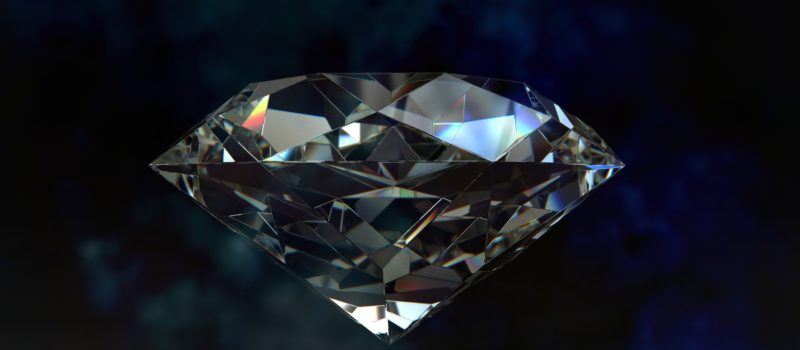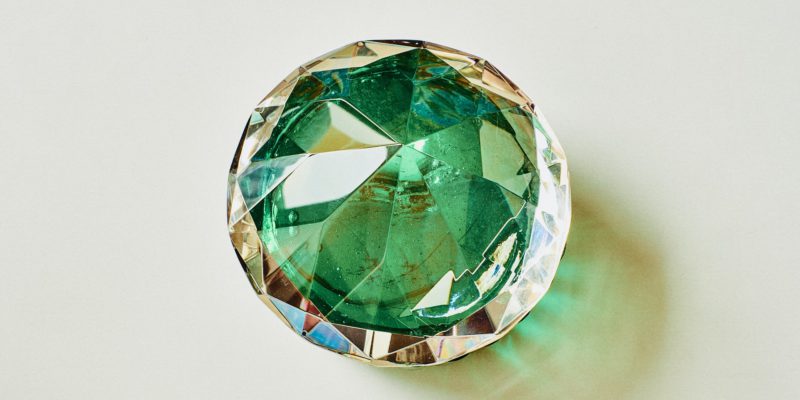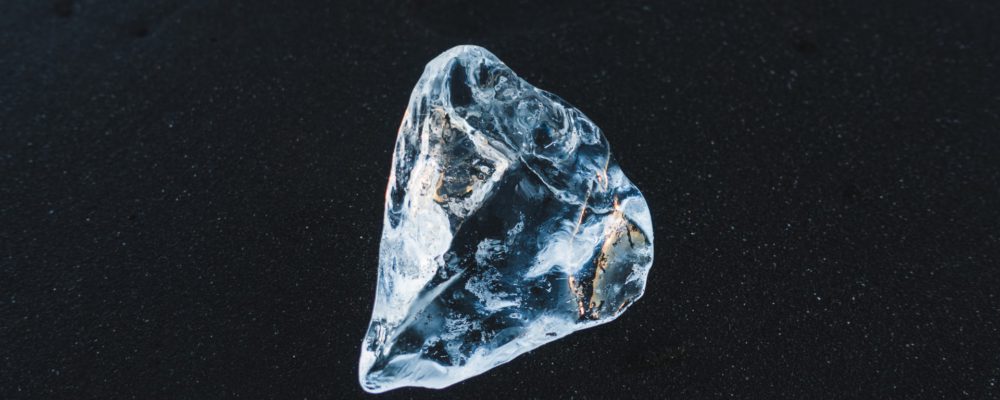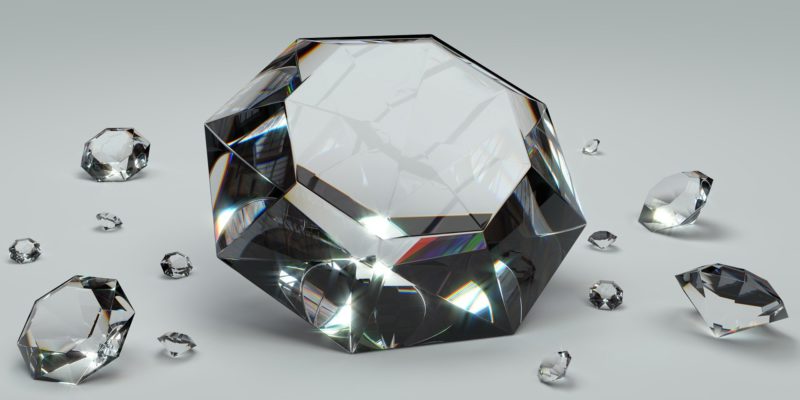Know your diamond
Diamond Education
At Bux Diamantaire we aspire to maintain one of the best collections of finest cut diamonds. The goal is to give our customers a wide range of options to choose from to bring a perfect match between the budget and their dream jewelry. But we understand that sometimes it might get daunting to choose the perfect piece of diamond from a bunch of options. The best solution we could come up with is to let you know about the characteristics of your desired diamond, the types, what factors affect the prices, how you should choose and so on. We tried to take you through a short tour below to update you on how diamonds work.
The most important features to look for when choosing a diamond can be defined through one single terminology- “The 4Cs of Diamonds”. The 4Cs consist of cut, color, clarity, and carat weight. These features are measured on a standardized grading scale and each diamond comes with a grading certification from independent diamond grading labs.
THE CUT
The Cut Of A Diamond
The cut of a diamond is the most important feature among the 4Cs because the most beautiful thing about a diamond, the sparkle, depends largely on the cut. A diamond has a numerous number of surfaces. The cut of a diamond defines how well these surfaces are aligned and well-proportioned the dimensions are to achieve the best sparkle. Small things like, a diamond’s diameter to depth ratio are crucial in influencing the price and beauty of a diamond.

THE BEST
The Best Cut
There is no such thing called the “Perfect Diamond”. Everyone wants the best sparkle they can get from their purchase, whether it be a 1 or 16 carat diamond. The cut is so crucial because even the clearest and flawless diamond can look gloomy if the cut is too deep or shallow. So as it is a continuous effort from the diamantaires and depends on expertise, the cut of a diamond is largely influenced by the budget. So, when choosing the diamond, it is advised to get the best cut grade affordable.
GRADES
Different Cut Grades
The IDEAL cut is the most reflecting cut representing the top 3% of cut qualities. Diamonds in this grade are low absorbents and reflect away most of the light entering through the surface of the diamond.
The VERY GOOD grade also represents high reflecting diamonds; not as much as the ideal grade but close with a lower price range. This cut grade depicts the top 15% quality diamonds.
The GOOD cut represents the top 25% with reflection rates lower than VERY GOOD and significantly lower than the IDEAL grade.
Characteristics
Characteristics of A Well-Cut Diamond
Superior Brilliance – refers to the white light reflection capabilities of a diamond.
Fire – represents light entering the diamond surface reflecting in the colors of the rainbow.
Scintillation – refers to the sparkle created through the change of contrast between dark and light areas.
Anatomy
The Anatomy of A Diamond
The structure of a diamond can be categorized into various sections. The term “Table” represents the largest facet of a gemstone. “Crown” represents the portion extending from the girdle to the table; basically the top portion of a diamond. The “Girdle” refers to the circumference of a diamond. It is the intersection of the crown and the pavilion. “Diameter” is basically the measurement from one girdle edge of a diamond straight across to the opposing side. The “Pavilion” refers to the portion extending from the girdle to the culet. It represents the bottom part of a diamond. The “Culet” is the facet at the tip of a gemstone. Generally, the preference is that the culet will be graded none or small meaning, not visible to the naked eye. The “Depth” is the height of a gemstone measured from the culet to the table.
Difference
Cut vs. Shape
Although the two terms might seem like being used interchangeably, they have quite the different meanings. While the “Cut” is related to the light performance of the diamond, the shape represents the outline and look of a diamond. The cut of a diamond is based on a combination of factors including polish, symmetry and proportions measuring the surface condition of the facets of a diamond.
Price Myth
The Expensive Myth
Most people try to determine the price of a diamond by its size, the number of carats. But the cut of the diamond is the most influencing factor to the price tag.
COLOR
The Color Of A Diamond
The color of a diamond is the second most important feature among the 4Cs of diamonds. The color grade of a diamond is determined by the lack of color in the diamond. Diamonds come in almost all natural colors and a diamond without any color can be found once in a blue moon. Diamonds are graded according to color by specialized professionals and the lower the color level of the diamond, the higher the grade. An important fact to note is that, the color of a diamond can be affected by the tone of a ring’s setting.

STANDARDS
GIA Color-Grade Scale
The industry standard for grading diamonds is provided by the Gemological Institute of America (GIA). The grading starts from colorless to light yellow or brown. Colorless diamonds are graded “D” and yellow diamonds are graded as “Z”. In the scales of D to Z, D is considered the best. Characteristics of different grades in the scales are listed below-
D Color Diamonds (Absolutely Colorless)- These diamonds are of the highest grade and extremely rare. Only a mere 8% of customers opt for these because of their rarity and high prices.
E Color Diamond (Colorless)- These diamonds are also very rare and the difference with D color diamonds cannot be identified with the naked eye. Around 16% of customers opt for E color diamonds.
F Color Diamond (Colorless)- About 20% of customers opt for F graded diamonds because of being almost similar to but lower at cost than D and E color diamonds. The minute differences between E, F, and D color diamonds can be detected only by a gemologist. Diamonds graded D, E and F go perfectly with platinum and white gold settings.
THE BEST
The best color
Trying to find the best diamond for a jewellery starts with the budget. Colorless diamonds (D, E & F) are the rarest to find and thus are the most expensive. Many opt for near colorless grades to optimize the budget and spend some more on the cut to get more sparkle. So, when choosing the color, other factors like size, shape and setting should also be considered.
GO BIG
More Visibility
Larger diamonds radiate more color. I, J or K color diamonds for under 1 carat and H color grade or higher is suggested for diamonds over 1 carat.
RECOMMENDATIONS
Based On Shape And Setting
Shape and setting can affect the color of a diamond significantly. Different metals used in settings can change the color of a diamond. For example, a warm glow is casted by yellow gold. So, it goes best as a setting with faint colored diamonds. On the other hand, Platinum or white gold will make a near-colorless diamond look icier. Moreover, some fancy shaped diamonds have the ability to hide colors making colored diamonds look close to colorless diamonds, all while reducing the cost upto 25%.
DIFFERENCE
white vs. fancy colored diamonds
1 in every 10,000 diamonds come in a natural rainbow spectrum color like red, orange, yellow, green, blue, pink, purple, and more. Colorless diamonds are not always the most expensive when more intense and rare colored diamonds are around. There is a completely different scale for grading fancy colors which often hold potential to be more expensive than even white diamonds.

CLARITY
Defining Clarity
Small imperfections on the surface and inside the diamond is common. The ones inside are referred to as inclusions while the ones on the surface are called blemishes. A diamond piece is graded on these imperfections and the diamonds with lower imperfections are graded higher resulting in higher prices. The beauty of a diamond is rarely affected by these imperfections because most of them cannot be seen with the naked eye. But these imperfections are what give diamonds their own characteristics. That is why no diamond is perfect, but unique.

TIPS
Things to keep in mind
> The necessity to buy a high clarity graded diamond to avoid visible imperfections is a misconception.
> Higher clarity grade will not necessarily result in more sparkle.
> The term used to refer to inclusions that are not visible without magnifications is known as “eye clean”.
> Even though cut and color is more important, for diamonds over one carat and fancy shaped, clarity also has a vital effect. So, budget allocation for clarity is also necessary.
> As a part of the very important “4Cs”, clarity is also a very important factor on a diamonds beauty. That is why it affects the price of a diamond and should be in consideration at the time of purchase.
GRADES
6 categories & 11 grades
> I1, I2 & I3 (Included Diamonds) hold significant inclusions. These imperfections can often be spotted with the naked eye and impacts beauty.
> SI1 & SI2 (Slightly Included- SI) diamonds are considered the best value for money if the diamond is “eye clean”. The usual visibility is under 10x magnification. Some SI2 inclusions are visible with the naked eye if seen from the side.
> VS1, VS2 (Very Slightly Included- VS) diamonds are very popular and great value for money. The inclusions in VS1 diamonds are difficult to see at 10x magnification while VS2 inclusions are relatively easy to identify.
> VVS1, VVS2 (Very, Very Slightly Included- VVS) diamonds are rare and comes in the eye clean appearance. Inclusions in these diamonds are hard to find under 10x magnification, even for the experts.
> Internally Flawless (IF) diamonds are eye clean and comes with no inclusions within but only on the surface. Under microscopes, small blemishes on the surface are visible.
> Flawless (FL) diamonds are extremely rare, less than 1% to be precise. These hold no inclusions or blemishes and nearly impossible to find.
FACTORS
Factors that affect clarity
Size plays an important role on clarity. The clarity grade of a diamond decreases with higher visible imperfections. The grade is also influenced by number. If the number of imperfections increases, then the clarity grade decreases. The position of an inclusion can turn it into reflector, thus affecting the grade. The nature of the characteristic of a diamond relates to the inclusion type and its effect on the sustainability of the diamond. Color & relief represent the ease of visibility of an inclusion and the variance of contrast between the inclusion and its surrounding area within the diamond.
CARAT
Defining Carat
The carat of a diamond is often considered a symbol of status. But many misconceptions are present in the market about this carat. The term is often misunderstood to be a diamonds size, not the weight. But in reality it’s the opposite. Moreover, it is also believed by many that the larger the carat weight, the better. But its proven to be a misconception because the carat weight does not at all affect the sparkle of a diamond. The sparkle rather depends on a well-crafted cut and as a result, a poor cut large carat diamond actually looks smaller than a very good cut small carat diamond.

PRICING
The Price
Rarity is one of the most dominating factors in the pricing of a diamond. Large diamonds are very rare. So, as larger carat diamonds are cut from rare larger chunks of rough diamond, the price increases with increase in carat. The rarity in finding these large chunks with preferred color and characteristics further increases the pricing.
HISTORY
Know The History
In the past, precious metals like diamonds used to be compared with seeds from the carob tree to determine weight. That is where the origin of the term “carat” comes from. Later, in the beginning of the twentieth century it was decided to measure 1 carat of diamond to be equal to .2 grams in the 4th general conference of weights and measures.
TIPS
Things to keep in mind
> Playing with the numbers can actually make you win. Choosing the carat slightly below the half or whole carat marks can reduce the price significantly. For example, the price of a 2.40 carat diamond is significantly lower than a 2.5 carat diamond and the difference is barely visible.
> Invest more on the cut than carat, because the cut has a significant influence on the rock looking bigger or smaller in the naked eye.
> The per carat cost of a diamond can be significantly according to its shape, specially for fancy shapes. A fancy shape diamond with the same carat as a round shape is always lower in price and often look bigger.
> Ring size will always play a big role in the look of a diamond. Same carat diamonds will look bigger or smaller in different finger sizes.
MYTH
Optimize Your Budget
The myths like the bigger the diamond the better, more carats mean more status are largely contributed by media, ad campaigns and movies to deceive people. As a result, many people don’t end up with best diamond by wasting their budget only on carat. But, the focus should be to optimize the budget to maximize the balance among the 4Cs.
GUIDE
Carat Hacks That Win
Diamonds can look bigger in the naked eye according to their setting design. For example, settings like the halo have smaller diamonds circling a larger diamond in middle. Now, even if the middle diamond is of lower carats, due to the smaller ones circling it, it always seems bigger in the subconscious mind of the viewer. Moreover, thin bands make the center stone seem larger in the subconscious mind.